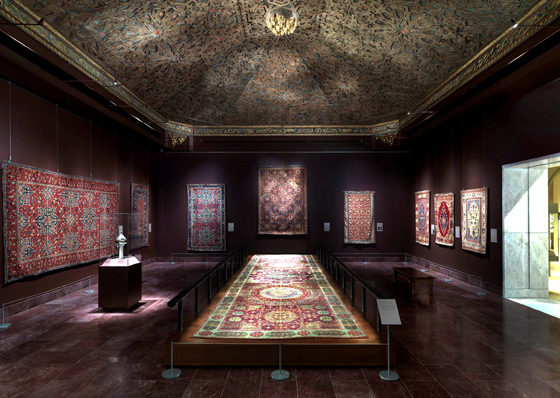In preparation for the Islamic Art exhibit that we are scheduled to visit, I decided that learning about Islamic religion and how it influences Islamic Art would be both interesting and beneficiary. After researching about the Islamic/Muslim religion and traditions, I realized how focused Islamic Art is upon these beliefs. Whether it be to honor the religion or to mock it, it is still a crucial focal point of the art and in order to understand the art, one must have some background knowledge of the Muslim religion.
The term “Muslim” can provide information in itself to the foundations of this religion. “Muslim” means submission to God (Allah). Every practice and ritual is designed to serve that single purpose. Thus, activities such as fasting, pilgrimaging, and holding festivals (centered around the life of Prophet Mohammed) came into existence and remained very influential and critical through out the history of the Muslim/Islamic culture. These activities are often depicted in Islamic Art and supported by Islamic architecture.
For example, Islamic Architecture often possesses the following features: large courtyards, central prayer halls, minarets, a wall niche indicating the direction to Mecca, domes, iwans to separate sections, repetitive art forms, Arabic calligraphy, bright color, and fountains. These features enable many things such as allowing festivals to take place, rituals to occur, and the Islamic devotion to Allah to be represented. However, there are many artists that rebel against the rules and create art that stimulates strong reactions of both interest and anger. It is my prediction that we will see a lot of this type of art at the museum.
*After the exhibit – My prediction was correct. However, I didn’t mention earlier the many carpet works and symbolic religious motifs also found at the museum in the exhibit. The art found in this exhibit can take you to other worlds. What I mean to say is that it enables an individual to imagine what it must have been like in those times and the aura that those cultures and religious groups most likely lived with. The museum also made a smart decision by including Islamic art in their exhibits for a couple of reasons. One reason being that it exposes the public to cultures that they are not typically used to and the other reason being that it broadens the group of people that feels welcome to attend. Any museum that is capable of doing so, will receive a large crowd, a lot of attention, and of course… a lot of money.



